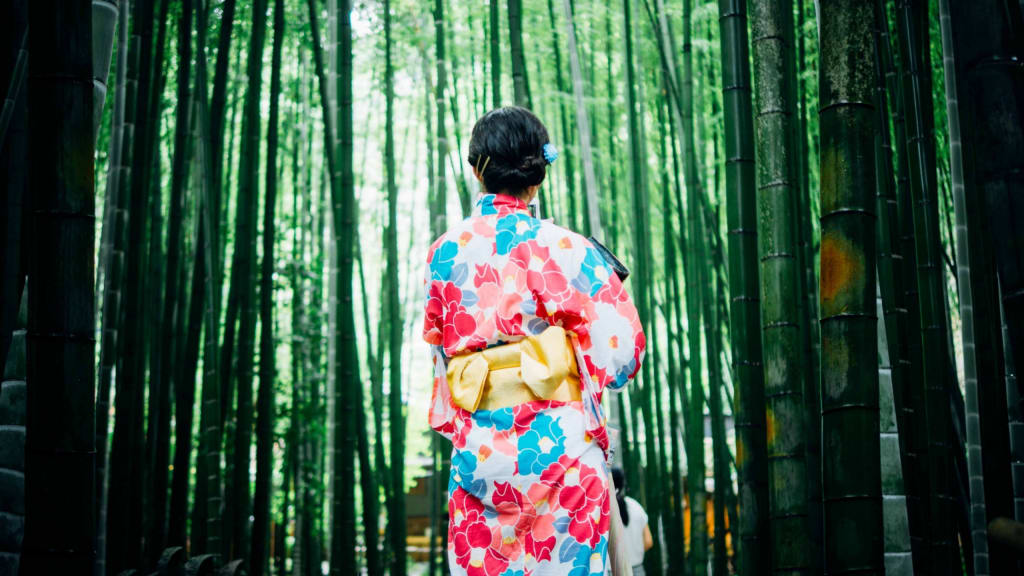Exploring Zuihitsu
An informal style of Japanese personal essay

I’m writing this in response to a recent Haiku-related writing prompt which I was thanked, along with another writer, for inspiring.
The editor of a Haiku publication read several short posts from graffiti living, my publication, and assumed that they were poetry.
She even left positive comments on some of them and clapped for others.
Aw, shucks.
Flattery will get you everywhere.
This was very flattering, of course, but my knee-jerk response was to assume that she was being sarcastic. (Imposter Syndrome? Who, me?!!)
Friends, she wasn’t being sarcastic. So consider myself told. But the thing is it wasn’t poetry, just random scribblings from my notebooks.
The Japanese call it Zuihitsu. I call it the half-assed scribblings of a lazy writer who wasn’t trying very hard. *looks innocent*
I’ve written poetry, and even had some poems published (tell no-one!), but I don’t consider myself a poet.
If anyone likes my writing then that genuinely makes me happy but it’s really just random musings from my notebooks.
So when she called upon me to write poetry, and take pictures of my handwriting, I’m afraid I drew a blank.
I’m not a poet and I know it.
And no-one should ever see my handwriting.
If you saw my handwriting you’d understand why — but you wouldn’t be able to read it.
So instead I’ve decided to write a few words about Zuihitsu — the form of writing people were encouraged to play with in the writing prompt.
Zuihitsu is a Japanese form of writing.
It’s not a form of poetry — though I guess there’s nothing to stop someone from writing poetry in a similar vein — but you would often find unfinished poems written in the same journals.
Zuihitsu usually consists of loosely connected personal essays and short fragments of prose written in response to the author’s life and surroundings.
Its name comes from the combination of two Japanese Kanji meaning ‘to follow’ and ‘brush.’
This is probably to convey the similarity to Zen brush painting — a form of Japanese ink painting where the entire composition is made in one swift movement.
Zuihitsu isn’t planned or structured, like an article or formal essay, but it also lacks the condensed language and symbolism inherent to poetry.
What it tends to look like is lots of short fragmentary essays rather than say a poem, story, or article.
You could go mad planning your magnum opus or sweat blood over a few lines of poetry.
Zuihitsu on the other hand is written off-the-cuff. This appeals to me greatly as I’m very lazy.
Although Zuihitsu is a form of personal writing it’s also a product of its time. You’re writing down your thoughts but they’re written in response to the world.
As such traditional Japanese Zuihitsu tended to be about courtly life and the politics of the time.
The Pillow Book (Makura no Soshi) is a personalised account of life at the Japanese court by Sei Shonagon which she completed c. 1002 CE during the Heian Period. The book is full of humorous observations (okashi) written in the style of a diary, an approach known as zuihitsu-style (‘rambling’) of which The Pillow Book was the first and greatest example.
Over 1,000 years ago Sei Shonagon, a lady-in-waiting at the Imperial court in Japan during the Heian period, kept a bedside journal (pillow book) of her life and loves.
So if you want to capture the spirit of Zuihitsu just picture a Japanese woman writing her innermost thoughts in her pillow book and you get the idea.
I’ve written before about how I see blogging as a contemporary form of Zuihitsu.
Digital Zuihitsu.
Blogging and ranting in the information age.
Most of my online writing is like that if you want to read more.
It’s a fun form of writing and I hope that you try your hand at it.
Happy writing!
James Garside is an independent journalist, author, and travel writer. Join Chapter 23 for the inside track on all their creative projects and insights about life, work, and travel.
About the Creator
James Garside
NCTJ-qualified British independent journalist, author, and travel writer. Part-time vagabond, full-time grumpy arse. I help writers and artists to do their best work. jamesgarside.net/links






Comments
There are no comments for this story
Be the first to respond and start the conversation.